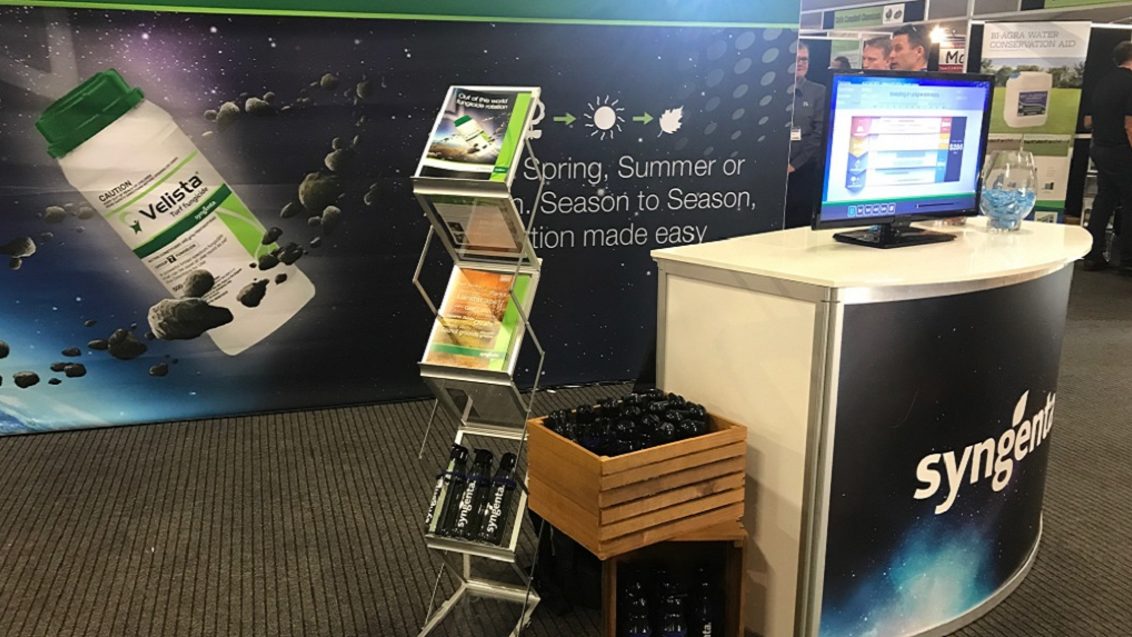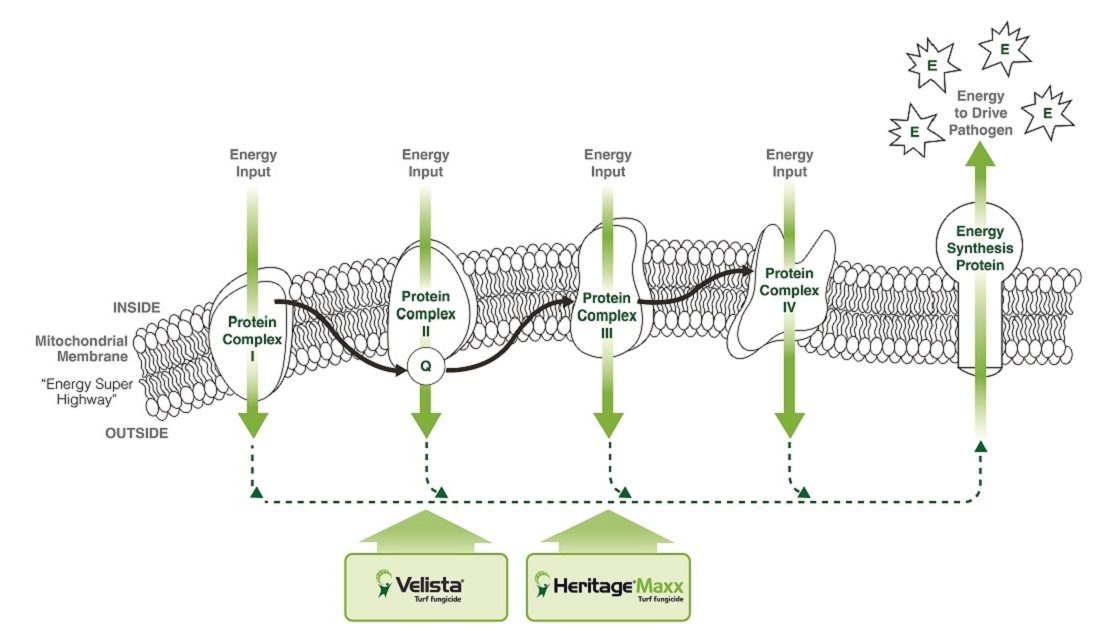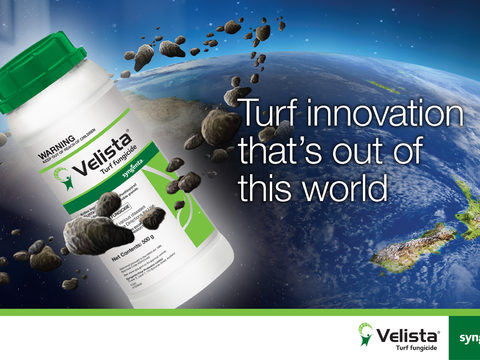VELISTA continues to offer out of this world rotation

In the turf industry, innovation is necessary to ensure that turf surfaces are sustainably maintained at consistently high levels. To meet this need, Syngenta continues to introduce new products for our industry and one year on VELISTA is proving a powerful tool for turf management.
OUT OF THIS WORLD FUNGICIDE ROTATION
‘Out of this world’ rotation – the headline used in the VELISTA marketing – is no understatement considering VELISTA’s ability to be a powerful rotation partner.
VELISTA contains a new active ingredient called penthiopyrad: a Group 7 SDHI fungicide with a novel mode of action. Its introduction to the market comes at a critical time. Group 11 fungicides – for example, Syngenta’s HERITAGE MAXX and HEADWAY MAXX – are widely used in turf grass management and provide excellent results, but are susceptible to incurring resistance. As a Group 7 fungicide, VELISTA can be rotated with Group 11 Strobilurin or Qols, such as products containing azoxystrobin, trifloxistrobin. This reduces our reliance on Group 11 fungicides and helps manage the risk of resistance.
It also means that VELISTA can be trusted to keep your greens in excellent condition when high temperatures and high humidity hit your facility. VELISTA’s benefits include:
Efficient results – through a mode of action different from most fungicides currently on the market, VELISTA blocks the pathogen cell’s energy production, blocks respiration and shuts down further spore or fungal growth.
Excellent residual activity – it moves into the turf grass leaves and roots, making it ideal for preventative applications. Once the leaf surface has dried, VELISTA is also rainfast, as the active ingredient moves into the plant via the translaminar and systemic action.
No phytotoxicity – the fungicide does not exhibit any growth retardant properties to turf grass, and has shown no phytotoxicity in Australian and US trials. It can be used in the middle of summer without any threat of burning or slowing turf grass growth.
Excellent mixing partner – can be placed into a rotation with HERITAGE MAXX to ensure a solid preventative approach for root diseases, while a VELISTA program that includes INSTRATA or MEDALLION will assist preventative action for leaf diseases. It should be your rotation partner of choice for disease prevention and control programs when the weather conditions shift from warm to hot, and summer stresses begin to apply to Couch and Bent/Poa greens.
Supports sustainability – VELISTA’s convenient water dispersible granule formulation and low use rate is designed to reduce packaging and environmental footprint. It also reduces exposure to users, as the rates of product applied are low at 1.5 kg/ha, reducing the need to mix large volumes of fungicide per application.
GETTING THE MOST OUT OF VELISTA
Prevention and early application in the disease cycle is critical to reducing the fungal population – not to mention the amount of scarring left on greens due to fungal outbreaks.
Here are some factors to consider when using VELISTA as part of your prevention and management program:
- Target your VELISTA application where you want to protect against disease on and within your turf.
- Begin applications prior to or at the early stages of disease development.
- Use the higher rate and/or shorter intervals when conditions continue to favour disease.
- For foliar and crown diseases like Anthracnose and Dollar Spot, apply to the crown in approx. 400L of water/ha. This will allow VELISTA to enter at the crown and leaf and move locally within the plant, protecting and treating for crown and leaf diseases.
- For the control of root diseases such as Spring Dead Spot and Brown Patch root infections, applications should be made at 600L and watered into the root zone.
- The signal heading for VELISTA is ‘CAUTION KEEP OUT OF REACH OF CHILDREN READ SAFETY DIRECTION BEFORE OPENING OR USING’. This signal heading is suitable for use for most local government authorities in Australia.
DIFFERENTIATING MODE OF ACTION
Penthiopyrad is the active ingredient in VELISTA and as mentioned is in the FRAC Group 7 (SDHI: Succinate Dehydrogenase Inhibitors). For more information regarding fungicide groups and resistance management strategies visit the Croplife website.
VELISTA works by blocking the pathogen cell’s energy production and shutting down any further spore or fungal growth. VELISTA moves into the turf grass leaves and roots providing excellent residual activity which is ideal for preventative applications.
Shutting down the energy super highway
Binds to protein complex in the mitochondria – stopping pathogen energy production

VELISTA controls fungal plant diseases by blocking respiration through a mode of action different from most fungicides currently on the market. The inhibition of respiration due to energy deprivation, stops the spore germination and mycelia growth necessary for infection. By binding to the protein succinate dehydrogenase in respiratory complex II, penthiopyrad inhibits one critical respiratory pathway, causing the desiccation of the fungal spores.
The mode of action is important for turfgrass managers to be aware of, as it reinforces that once again, prevention and early application in the disease cycle is critical to reducing the fungal population and reducing the amount of scarring left on greens due to fungal outbreaks.


